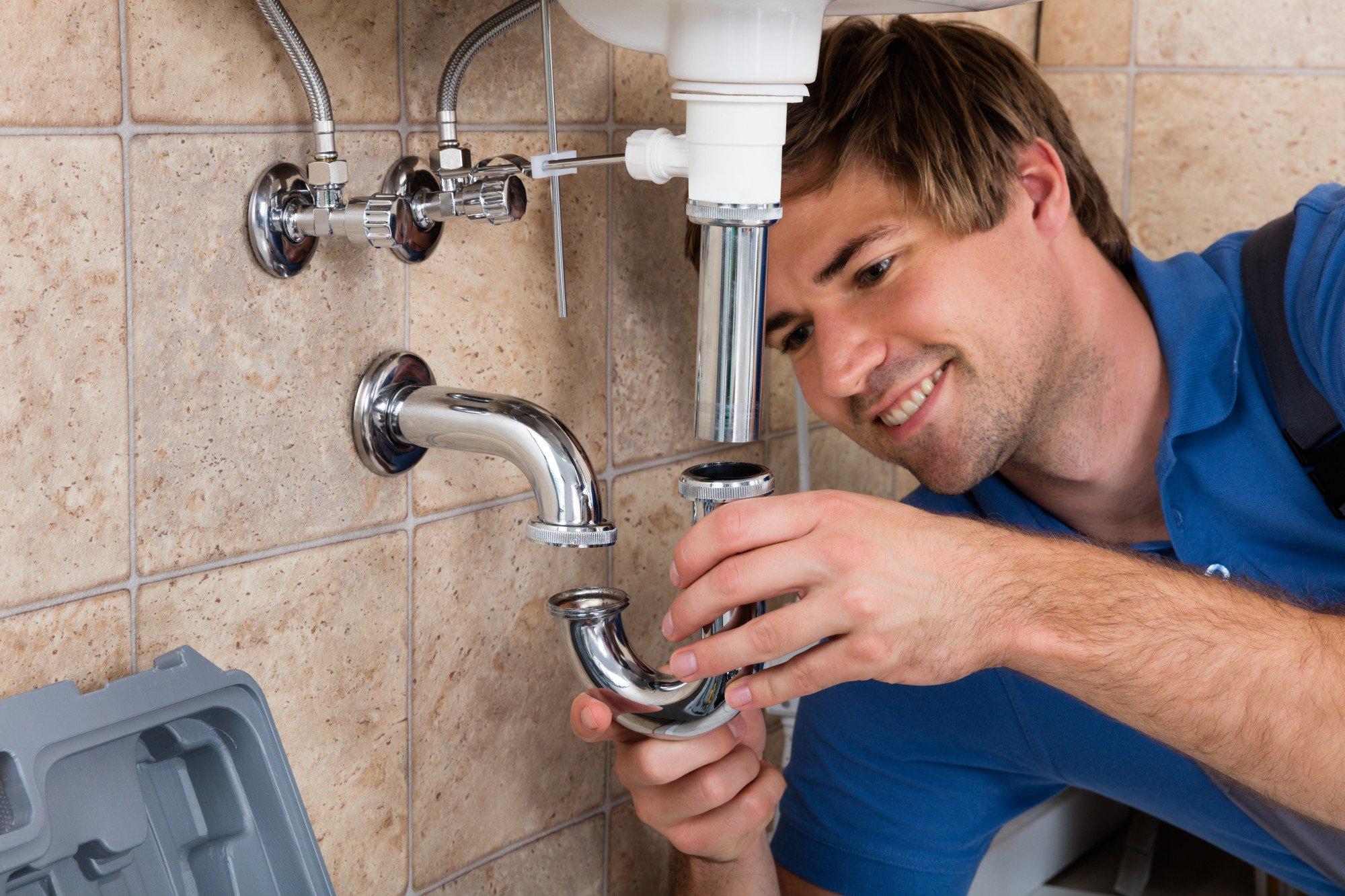Any homeowner can tell you that kitchen plumbing leaks are a hassle.
Left unaddressed, these leaks can lead to more serious problems down the road.
This brief guide will cover key points related to kitchen plumbing leaks.
- Identifying kitchen sink leaks: The first step is to locate where the issue is coming from in your kitchen plumbing system.
- Common causes of leaks: Understanding what leads to leaks helps prevent future issues. These may include worn-out washers or corroded valve seats.
- Leak checks for tap and drain seal: Regular inspection of these elements can help catch leaks before they become bigger problems.
- Fixing leak issues with household items: Some minor leaks can be remedied with simple household tools and materials.
- Prevention techniques for sinks: Having routine practices in place can help prevent leaks from occurring.
- Routine plumbing checks guidelines: Regular checks on your plumbing system are a must to ensure everything’s running smoothly.
- Consulting plumbing experts: When DIY methods are inadequate, it’s time to bring in expert help from trained plumbers.
Your home is your castle, and like any castle, its defences should be strong.
Maintaining Your Kitchen Plumbing System
The importance of regular maintenance and checks on your kitchen’s plumbing system cannot be overstated.
A well-maintained system not only ensures a hygienic and safe environment but also saves you money in the long run.
Remember, the best way to deal with leaks is prevention – so stay vigilant.
And, when the need arises, don’t hesitate to get professional help.
Contents
- Discovering and Identifying Kitchen Sink Leaks
- Common Causes of Kitchen Plumbing Leaks
- Checking the Tap and Drain Seal for Leaks
- How to Fix Leak Issues with Household Items
- Worn-Out Washers and Corroded Valve Seats: The Culprits
- Prevention Techniques for Kitchen Sink Leaks
- Guidelines for Conducting Routine Plumbing Checks
- Professional Help: When to Consult Plumbing Experts
- Leak Prevention Recap
Discovering and Identifying Kitchen Sink Leaks
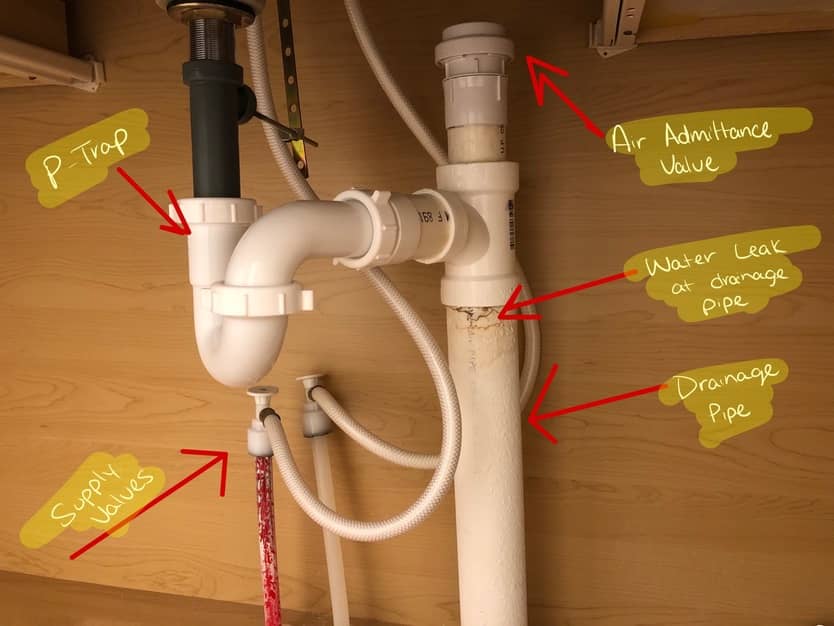
Let’s face it, we’ve all seen that irritating drip of water from a leaky kitchen tap. But what about the hidden leaks, the ones not immediately visible? Here are a few tips on how to spot them.
Look out for musty odours or damp surfaces. These are often the tell-tale signs of a hidden leak. Water stains under your sink cabinet could also indicate a problem.
If you can see mould or mildew, mate, there might be more than just surface-level moisture. This could be due to a persistent leak.
- Warped flooring or peeling paint: These damages may suggest a concealed constant drip.
- Decreased water pressure: Often a sign that there’s a leak somewhere along the line.
- Unusually high water bill: This can indicate an undetected leak in your home plumbing system.
Hearing water running when all fixtures are off is another sign to watch out for. It’s essential to attend to leaks promptly to avoid long-term damage and costly repairs.
An experienced plumber can help identify and fix these issues in no time. At Ferguson’s Plumbing, we’re skilled in handling leaks of all shapes and sizes.
Common Causes of Kitchen Plumbing Leaks
Plumbing leaks can often be a result of wall and floor abnormalities. Discoloration, water stains or spongy drywall are telltale signs.
An unexpected spike in your utility bills can also hint at a hidden leak. Keep an eye on your water usage.
Toilet flapper issues are another common cause. You can use the food coloring trick to check if the flapper is leaking.
A faulty toilet handle chain connection could also be a culprit. Ensure that it is functioning properly.
- Dishwasher: Check for leaks under your appliances, including the dishwasher and refrigerators with water lines.
- Yard inspection: Look for unusual grass patches, greener spots or puddles – these could indicate a leak.
- Taps: Damaged rubber washers on your taps often lead to leaks.
- Water meter monitoring: Check your water meter before and after an hour with the shut-off valve closed to determine if there’s a leak.
If the leak continues, consider shutting off your main water supply. This will help you identify whether the issue is inside or outside your home.
An inspection of your attic or basement during heavy rain can expose if there’s a roof leak causing wetness in your kitchen.
Finally, you might want to consider installing a leak detector. This device provides automatic leak detection and shutoff, preventing any potential damage.
Checking the Tap and Drain Seal for Leaks
Identifying the source of your leaky tap is your first order of business. It could be dripping from the spout’s end or have leaks around its base.
To begin, turn off your water supply. Look for shutoff valves beneath the sink. If you can’t find any or they’re not operational, you might have to shut off the main valve for your entire house.
- Relieve Water Pressure: After turning off your water supply, open the tap halfway to relieve any residual water pressure.
- Cover Sink Drain: Use strainer baskets or rags to cover your sink drain holes. This’ll prevent smaller parts from getting lost down the drain during the repair process.
- Disassemble Tap: While removing parts, pay keen attention to their order and orientation for easy reassembly later. A digital camera can be quite handy in recording each step.
You can then inspect the valve’s interior after all the parts are out. Look for any signs of deteriorated gaskets or mineral deposits. Cleaning the surface with a cloth or fine nylon pad can help maintain its longevity.
If mineral deposits prove stubborn, soaking them in vinegar should loosen them up. Also, check if there are plugged holes in the tap body that could be causing slow water flow. You can use a penknife or a small screwdriver to clean them out.
Reassembling your tap, do not forget to flush it first to clear any debris loosened during cleaning. Hold a rag over it and slightly open the water shutoff valve.
The tap should be opened to the halfway mark before you gradually turn on the shutoff valves. Keep it open until water flows freely and all the air is out of the pipes. If water flow remains slow, your aerator might be clogged. You can unscrew it and clean it out. That should fix your leak.
How to Fix Leak Issues with Household Items
Ladles and blokes, we’ve all been there — a surprise kitchen leak on a calm Sunday. It might seem like disaster, but the solution’s closer than you think.
The first rule here is to keep your cool. Unless your ceiling’s transforming into Niagara Falls, leave the water running. This might sound a bit bonkers, but it helps you spot the leak.
Now, feel around for any sponginess on your walls or ceiling. If the leak is minor and you can access the pipe, there are some handy household items you can use to stall it.
| Item | Use |
|---|---|
| Duct tape | Quick temporary seal |
| Electrical tape | A slightly stronger temporary fix |
| WD-40 | Helps dry out and protect the affected area |
| Hose clamps | An easy way to secure your temporary sealing materials |
| Remember: these are temporary solutions! | |
In an upcoming section, you’ll be introduced to a practical method for addressing a copper pipe pinhole leak using a tool called SharkBites. Stay tuned!
Worn-Out Washers and Corroded Valve Seats: The Culprits
The health of your kitchen plumbing can take a hit when washers on the valve seats get worn out or corroded.
Why it Matters
You might think, “it’s just a washer”, but it’s an essential component in preventing leaks.
When it wears out, it no longer serves its purpose and that can lead to potential water damage over time.
A Bit About Valve Seats
Valve seats play a crucial role too. They keep the tap and the spout perfectly secure.
If they corrode, they can cause leakage around the sink area. Not an ideal situation to return home to!
Keep An Eye On Your Plumbing
Frequent changes in temperature and improper installations can accelerate the wear-and-tear process.
Preventative maintenance is key to avoiding major issues down the line.
Catch these problems early on, and you’ll save yourself a lot of hassle and money.
Your Action Steps
If you suspect your washers or valve seats are failing, don’t worry mate – reach out to your local plumber.
We’re here to help get your kitchen plumbing back on track. Always remember – a drip today could be a deluge tomorrow!
Prevention Techniques for Kitchen Sink Leaks
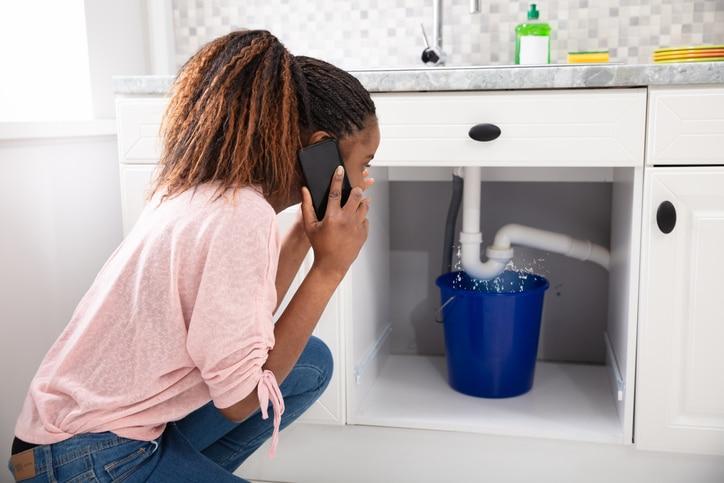
As an experienced plumber, I frequently see kitchen sink leaks. It’s frustrating because they can often be avoided with a bit of prevention.
Start by clearing under your sink. Make sure it’s dry and then run water in both basins.
Check for Leaks
Now, shine a torch under the sink to check if any water is leaking. If everything’s dry, you’re good to go.
If not, it’s time for some action. Ensure fittings and connections are tight and replace worn components if needed.
Maintain Your Plumbing System
Avoid overstraining your pipes by monitoring the water pressure. It should be within 40-60 PSI.
If the pressure is too high, consider using a pressure regulator.
The Role of Proper Drainage
Flawed drainage can cause leaks too. Invest in a good drain strainer to prevent sediment build-up. Keep the drain clean and avoid tipping oil or grease into it.
Fight Corrosion
Corrosion is another common problem. Replace rusty metal pipes and ensure all seals are in top-notch condition.
If you detect a leak, I’d recommend immediate action to prevent further damage.
Guidelines for Conducting Routine Plumbing Checks
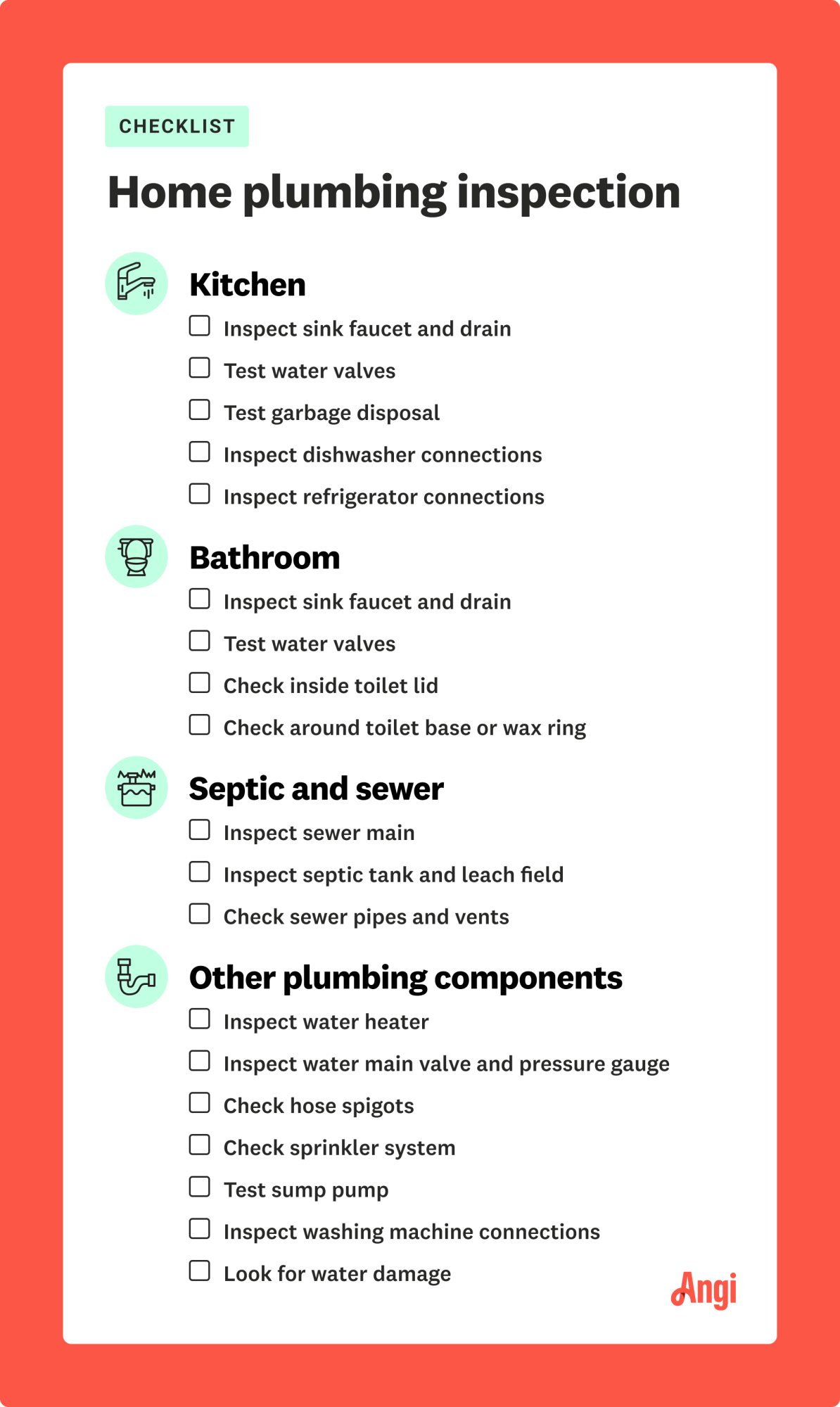
Keeping up with regular plumbing checks is a crucial step in preventing costly issues. Testing the water pressure using a pressure gauge will only take a few minutes of your time.
If you find that pressure is too high, installing or repairing the pressure regulator can be an effective solution. This will undoubtedly bring your pressure levels to safer measurements.
It’s advised that household plumbing inspections should be conducted once every two years. Your plumbing system doesn’t endure the same wear and tear as mechanical and electrical systems, so an annual check may not be necessary.
The condition of your pipes tells a lot about potential problems. An inspection can reveal leaks, blockages, corrosion or build ups, and even highlight potential future issues.
If a drain needs clearing, there’s an easy solution hiding in your pantry – vinegar and baking soda. Pour a cup of each down the drain, wait an hour, then flush with boiling hot water.
A constantly running toilet could mean the flapper valve is worn out or damaged. Replacing this yourself is quite simple, but if it keeps running, it may be due to other issues such as high water pressure or faulty valves.
If there are signs of leaking around the cold water inlet pipe and hot water exit pipe above the water heater, it is essential to address these immediately. Regularly flushing the tank every few years can help eliminate any sediment in the bottom of the tank.
If faulty valves are discovered while checking branch shutoff valves that manage different zones of your plumbing system, replacing them should be prioritised. They play a significant role in controlling the flow of water throughout your home.
You should remember to check outdoor taps for leaks regularly as well. These can be repaired by replacing washers or cartridges and is especially critical in cold climates where extreme winter temperatures can lead to cracking.
Lastly, maintain a good water pressure range within the house. This can avoid unwanted stress on your home’s plumbing system, ensuring a more efficient and effective flow of water throughout your property.
Professional Help: When to Consult Plumbing Experts
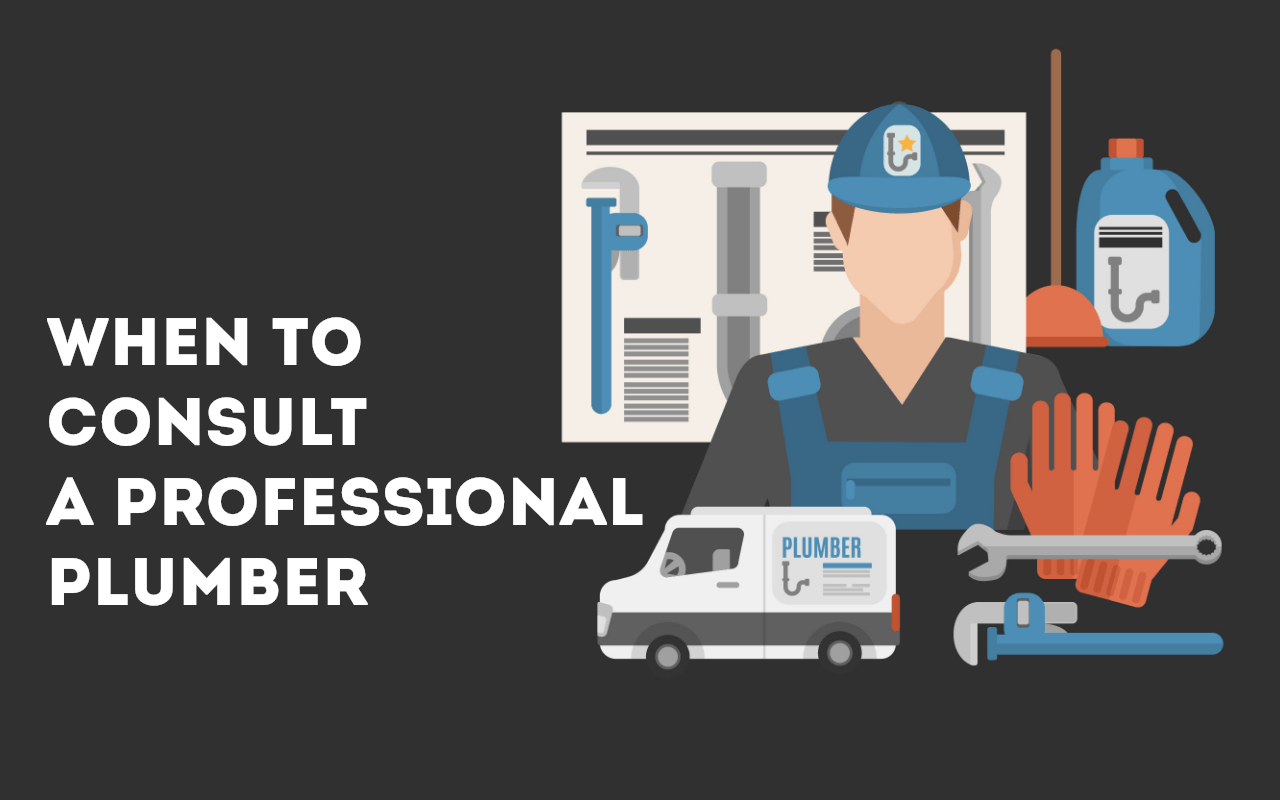
Engaging a skilled plumber boasts a wealth of benefits. Trained and certified, they guarantee high-quality workmanship.
DIY solutions might seem cost-effective, but professional plumbers offer intricate know-how, detecting and mending complex problems swiftly.
They have immediate access to essential tools and supplies, saving you multiple hardware store trips.
Adept at diagnosing leak sources, these experts provide efficient solutions while maintaining warranty protection.
Proactive plumbing professionals spot minor issues before they escalate into costly disasters. The hallmark of excellence is prevention not just cure.
The services provided are vast. Companies like Mr. Rooter Plumbing cater to both residential and commercial needs with an array of services.
Other service providers, such as ARS/Rescue Rooter, offer specials ranging from septic tank repairs to gas line fixes.
Binsky provides comprehensive commercial services, including emergency call-outs; The Home Depot repairs everything from leaking pipes to clogged drains.
Leak Prevention Recap
Always remember, proper maintenance, regular inspection, installation of quality fixtures, good garbage disposal etiquette, and a watchful eye can help minimise kitchen plumbing leaks. Seek professional help when needed to avoid costly damages. If you follow these 8 tips, your home’s plumbing will thank you by providing hassle-free service.
- Kitchen Oasis. Fusion of Relaxation and Functionality (AU) - November 2, 2024
- Pure Water Pleasure. Why You Should Consider Installing a Kitchen Water Filter - October 22, 2024
- Green Plumbing Practices. Eco-Friendly Ideas for Your Melbourne Kitchen - October 2, 2024
Related posts:
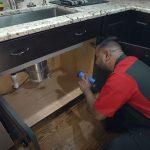 Simple Plumbing Tips for Trouble-Free Kitchen Operations
Simple Plumbing Tips for Trouble-Free Kitchen Operations
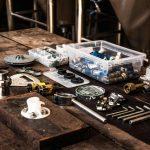 Plumbing Perfection: Tips to Maintain Your Aussie Kitchen’s Lifelines
Plumbing Perfection: Tips to Maintain Your Aussie Kitchen’s Lifelines
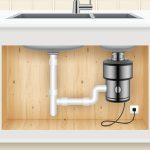 Insider’s Guide: Understanding Your Kitchen Plumbing System
Insider’s Guide: Understanding Your Kitchen Plumbing System
 Easy Kitchen Plumbing Upgrades to Save on Your Water Bills
Easy Kitchen Plumbing Upgrades to Save on Your Water Bills
 Innovative Kitchen Plumbing Products You Need to Know About
Innovative Kitchen Plumbing Products You Need to Know About
 Common Kitchen Design Mistakes to Avoid: Expert Tips from Fergusons Plumbing Australia
Common Kitchen Design Mistakes to Avoid: Expert Tips from Fergusons Plumbing Australia

